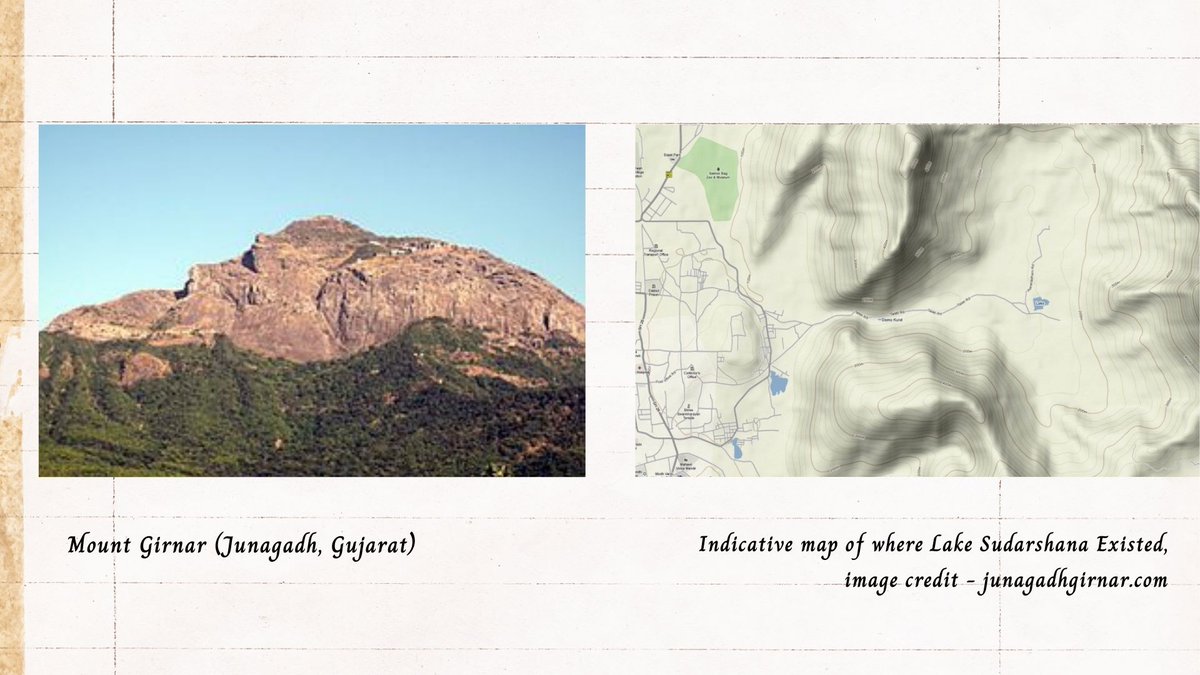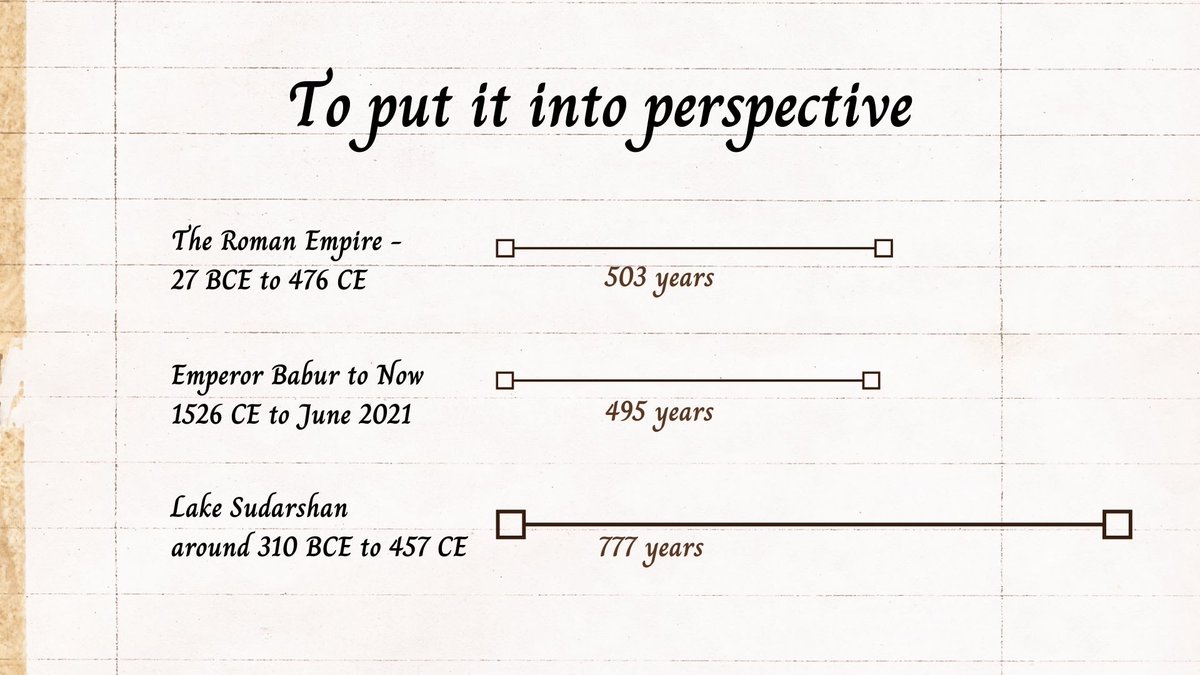
The story of Lake Sudarshan -
A lake Emperor Chandragupta Maurya constructed > 2300 years ago, and which irrigated Junagadh (Gujarat) region for more than 777 years
(Thread)
A lake Emperor Chandragupta Maurya constructed > 2300 years ago, and which irrigated Junagadh (Gujarat) region for more than 777 years
(Thread)

The great Emperor, Chandragupta Maurya (324-297 BCE) once ordered his minister Pushyagupta to construct an irrigation lake in the present day Junagadh.
Thus at the foothills of Mount Girnar & the confluence of rivers "Suvarna Sikata" &"Palashini", lake Sudarshan was constructed.
Thus at the foothills of Mount Girnar & the confluence of rivers "Suvarna Sikata" &"Palashini", lake Sudarshan was constructed.
Decades later, Emperor Ashok ordered his Greek governor, Tushaspha to design and construct irrigation canals on the lake Sudarshan.
The lake continued to serve the people in the region for centuries to come, until an unseasonal cloudburst wrecked the dam around 150 CE.
Then, the region was ruled by the Saka king Rudradaman. He repaired the bund again, and he did so against the advice of his royal advisors.
Then, the region was ruled by the Saka king Rudradaman. He repaired the bund again, and he did so against the advice of his royal advisors.
The bund was used for centuries to come. Its use and existence are mentioned in the records of Emperor Skandagupta of Gupta dynasty, who ruled over India in the 5th century CE.
The historical records show that the dam was continuously operational for almost 8 centuries.
The historical records show that the dam was continuously operational for almost 8 centuries.

The story of Lake Sudarshan has lived on through a unique inscription.
Imagine: there exists a large boulder, which has withstood nature & man for millions of years.
Imagine: three kings, centuries apart, choose that boulder to be the immortal witness of their deeds & triumph.
Imagine: there exists a large boulder, which has withstood nature & man for millions of years.
Imagine: three kings, centuries apart, choose that boulder to be the immortal witness of their deeds & triumph.
Well, you don't have to imagine.
It exists near the now-extinct lake Sudarshan.
And, It is called "Junagadh Inscriptions".
It exists near the now-extinct lake Sudarshan.
And, It is called "Junagadh Inscriptions".

Emperor Ashok, King Rudradaman and Emperor Skandagupta have inscribed their story on three sides of the single rock.
To think of it, few meters of a rock's circumference contain a history that spans 700 years.
To think of it, few meters of a rock's circumference contain a history that spans 700 years.
It is an amazing story from India's ancient past, and it is a story we love telling again and again (yes, we have shared it before).
For threads like this and many more do follow us @BhandarkarI
And if you have any such story yourself, do share it in the discussion below.
For threads like this and many more do follow us @BhandarkarI
And if you have any such story yourself, do share it in the discussion below.
• • •
Missing some Tweet in this thread? You can try to
force a refresh






